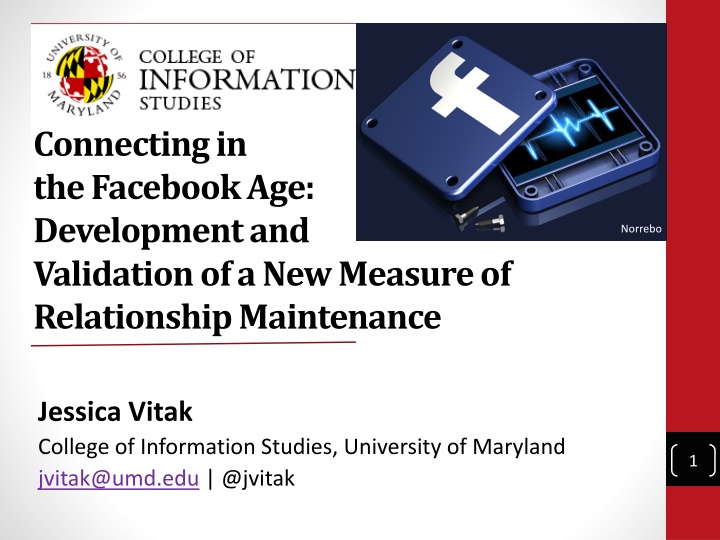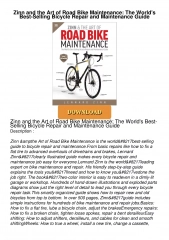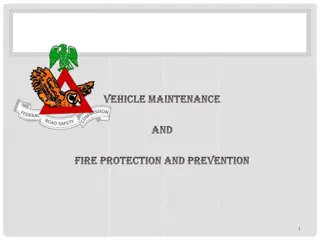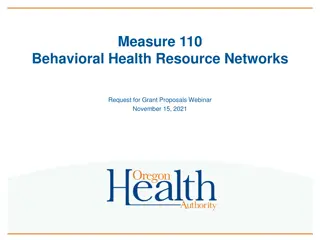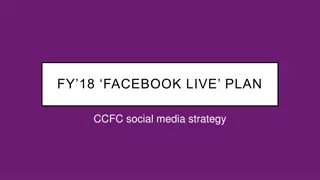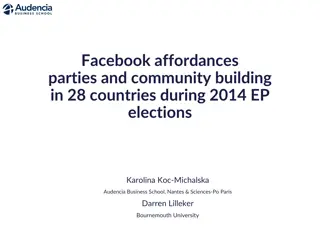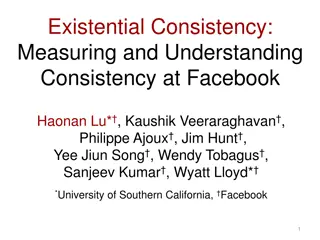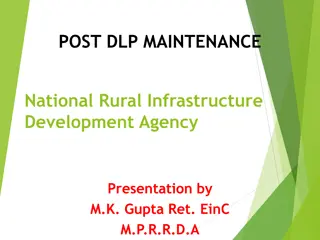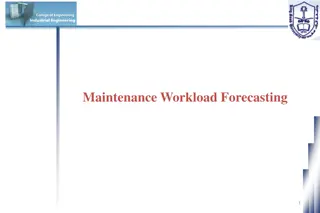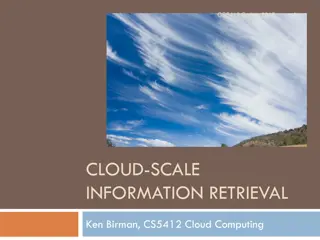Developing a New Measure of Relationship Maintenance in the Facebook Age
This study focuses on the development and validation of a new measure of relationship maintenance in the context of Facebook. It addresses the limitations of existing measures that emphasize strong-tie relationships and collocation, which may not apply to the diverse nature of Facebook connections. By devising a new inventory of 58 behavioral items and conducting exploratory factor analysis, the study identifies key constructs such as supportive communication. The research highlights the importance of adapting measures to account for the unique affordances of digital communication technologies.
Download Presentation

Please find below an Image/Link to download the presentation.
The content on the website is provided AS IS for your information and personal use only. It may not be sold, licensed, or shared on other websites without obtaining consent from the author.If you encounter any issues during the download, it is possible that the publisher has removed the file from their server.
You are allowed to download the files provided on this website for personal or commercial use, subject to the condition that they are used lawfully. All files are the property of their respective owners.
The content on the website is provided AS IS for your information and personal use only. It may not be sold, licensed, or shared on other websites without obtaining consent from the author.
E N D
Presentation Transcript
Connecting in the Facebook Age: Development and Validation of a New Measure of Relationship Maintenance Norrebo Jessica Vitak College of Information Studies, University of Maryland jvitak@umd.edu | @jvitak 1
Why relationship maintenance matters 2 Flickr: Photos_by_Lis
Measuring relationship maintenance Driven by Stafford & Canary s (1991) research on married couples relationships. Flickr: chicks57 Linked engagement in strategies to: Commitment to partner Mutual liking Relational satisfaction 3
Whats wrong with existing measures? Major weakness of relationship maintenance research is its focus on strong-tie relationships and collocation. Many Facebook relationships are weak ties or geographically distant. Old measures do not account for affordances of new communication technologies. 4 Dibble et al. (2012) Unidimensional Relationship Closeness Scale
Method 3000 non-faculty MSU staff were invited to complete an online survey on their Facebook use (415 responses). Participants logged into site, went to their profile and selected Friend in top left position. They then entered name of person into a survey field. Questions were tailored to the selected Friend (e.g., I use Facebook to get to know John better ). Facebook Profile Layout October 2012 5
Devising a new measure of relationship maintenance Inventory of 58 behavioral items Exploratory factor analysis (EFA) Principal components analysis Promax rotation 35 items removed 4-factor solution explained 60.9% of variance Confirmed via scree test (Cattell, 1966) and parallel analysis (Horn, 1965) 6
Relationship Maintenance Constructs Supportive Communication (7 items, M=3.68, SD=.82, =.88) Indicative of social grooming. Items capture tone of interaction and provisions of support. Sample Items My Facebook interactions with (person) are generally positive. When I see (person) sharing good news on Facebook, I'll like his/her update. I make sure to send (person) a note (wall post, comment, private message, etc.) on his/her birthday. 7
Relationship Maintenance Constructs Shared Interests (7 items, M=2.33, SD=.88, =.87) Interactions that highlight common ground between partners. Sample Items When I see something online that I think (person) would find interesting, I'll send him/her a note about it on Facebook. I share links with (person s name) on Facebook. (Person) and I use Facebook to coordinate events related to a shared interest, sport, and/or hobby. 8
Relationship Maintenance Constructs Passive Browsing(4 items, M=2.91, SD=.89, =.85) Low-cost way to keep up-to-date on others lives without direct interaction. Sample Items Estimate the frequency with which you browse his/her photo albums. I browse through (person s name) s profile page to see what he/she's been doing. 9
Relationship Maintenance Constructs Social Information Seeking (5 items, M=2.73, SD=.86, =.79) Use of the site for learning more about people with whom the user has some offline connection (Ellison et al., 2011). Using the site to track others everyday activities as well as learn new things about them. Sample Items I use Facebook to get to know (person) better. I keep up to date on (person)'s day-to-day activities through Facebook. I use Facebook to find out things person and I have in common. 10
Convergent validity testing Variable Notes: Relational Closeness see Dibble, Levine & Park (2012) Perceived access to social provisions -- see Cutrona & Russell s (1986) Social Provisions scales Facebook Social Connection see Ledbetter (2009) Facebook Communication Frequency wall posts, comments, Likes with Friend 11
Confirmatory factor analysis Original model (23 items): Metric CMIN: 2.367 RMR: .069 CFI: .937 GFI: .894 RMSEA: .058 12
Confirmatory factor analysis Original model (23 items): Metric CMIN: 2.367 RMR: .069 CFI: .937 GFI: .894 RMSEA: .058 <.08 Thres. <3 <.08 >.90 >.90 13
Confirmatory factor analysis Revised model (19 items): Metric CMIN: 1.977 RMR: .058 CFI: .965 GFI: .931 RMSEA: .049 <.08 Thres. <3 <.08 >.90 >.90 14
Internal reliability & validity Full 23-item measure Adjusted 19-item measure Thresholds: Reliability: CR > .7 Convergent Validity: CR>AVE; AVE>.5 Discriminant Validity: MSV<AVE; ASV<AVE Notes: CR=Composite Reliability AVE=Average Variance Extracted MSV=Maximum Shared Variance ASV=Average Shared Variance 15
Next Steps 1. Retest 23-item relationship maintenance strategies measure with new sample to further establish validity. 2. Include additional items that tap into underlying constructs of Social Information Seeking subscale. 3. Also collect data on engagement in Stafford & Canary s relationship maintenance items. 4. Compare scales predictive ability against relational outcomes to establish concurrent validity. 16
Why is this measure important? CMC facilitates relationship maintenance among various ties. CMC researchers need valid and reliable measures accounting for affordances of these technologies. Additional analyses revealed that engagement in these strategies is associated with relational benefits and that these benefits vary by relational type. 17
I suspect that Facebooks one great contribution has been to slow down that rate of relationship decay by allowing us to keep in touch with friends over long distances. Jessica Vitak College of Information Studies, University of Maryland jvitak@umd.edu | Twitter: @jvitak Find this paper at jessicavitak.com/cv Thanks! --Robin Dunbar 18 This study was funded through a research grant from the College of Communication Arts & Sciences at Michigan State University.
